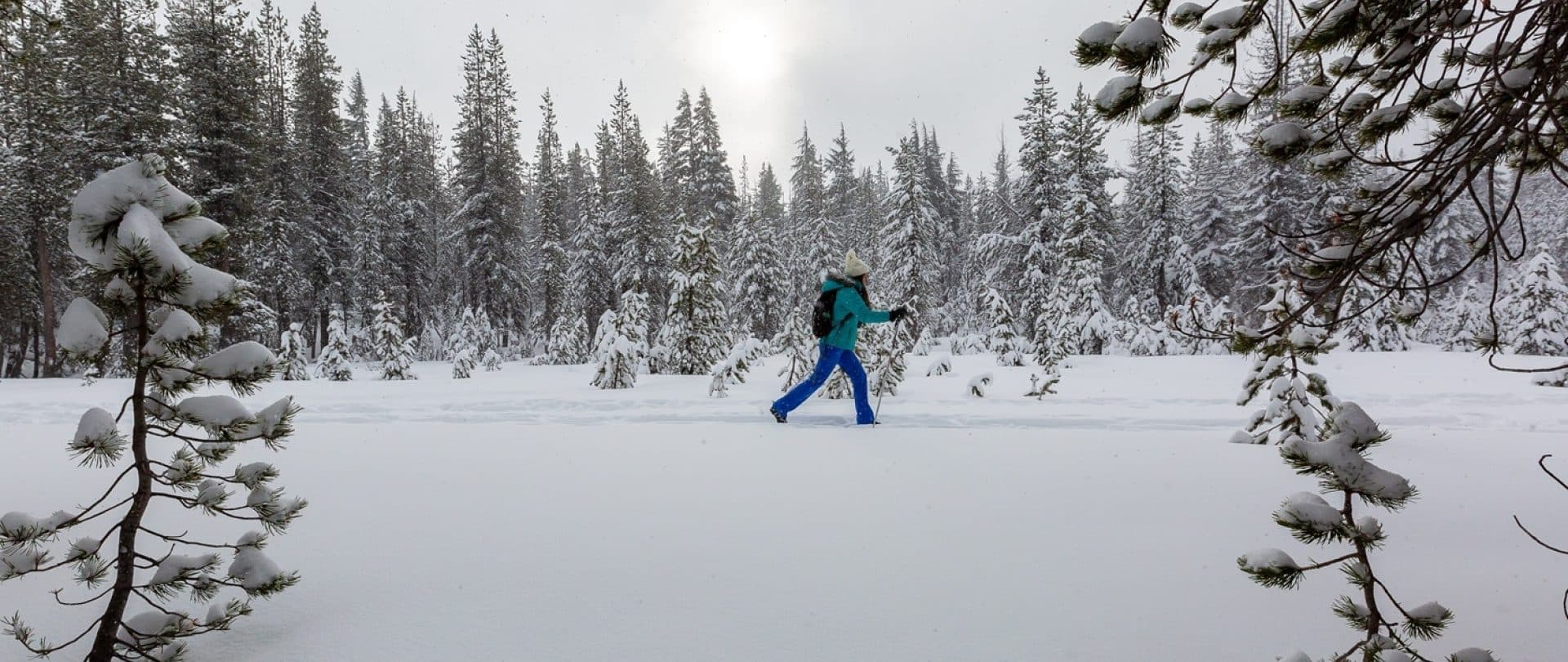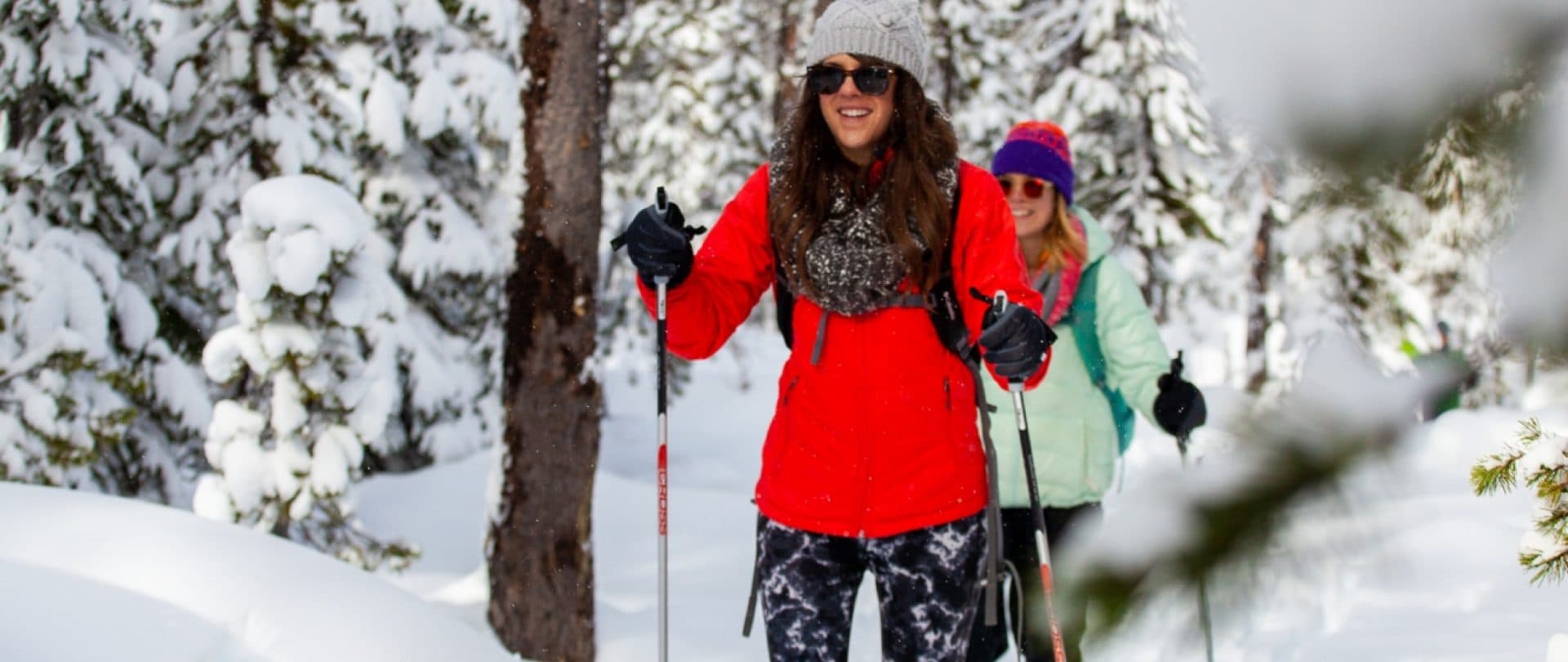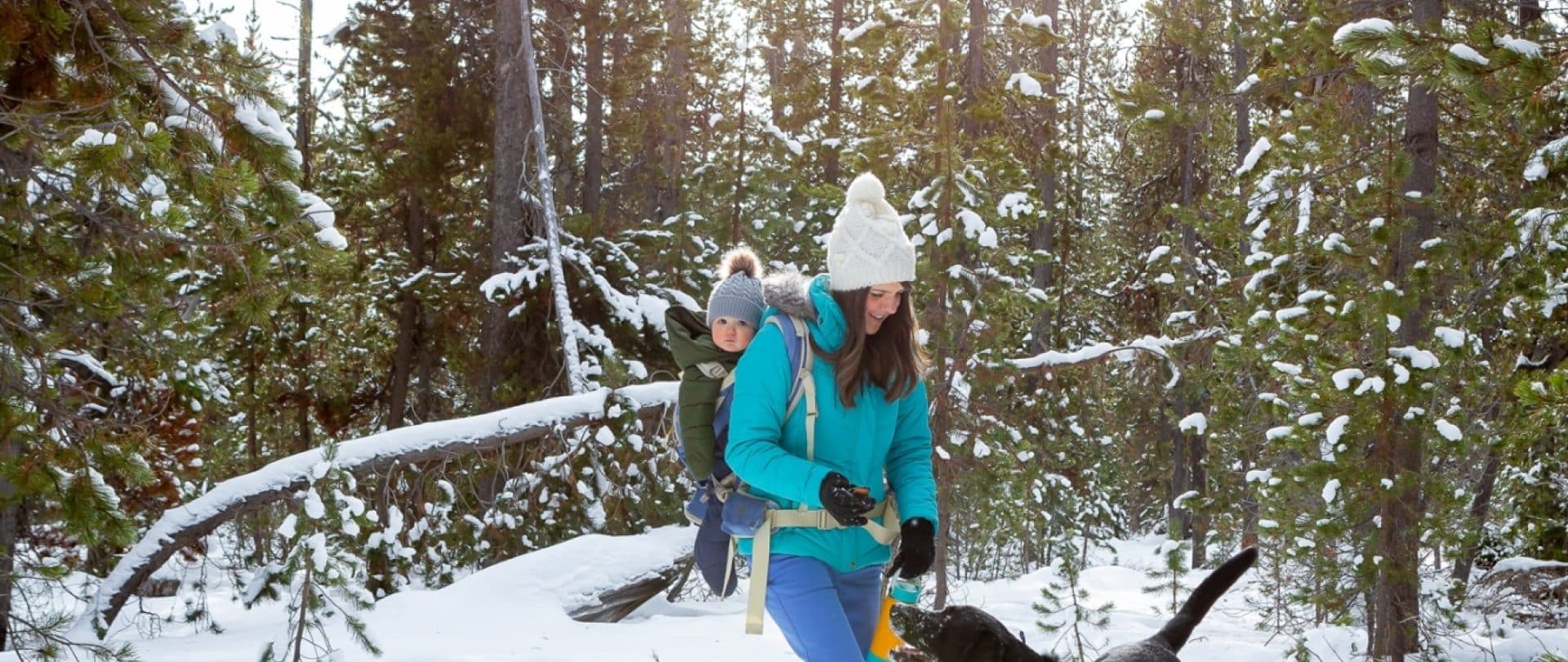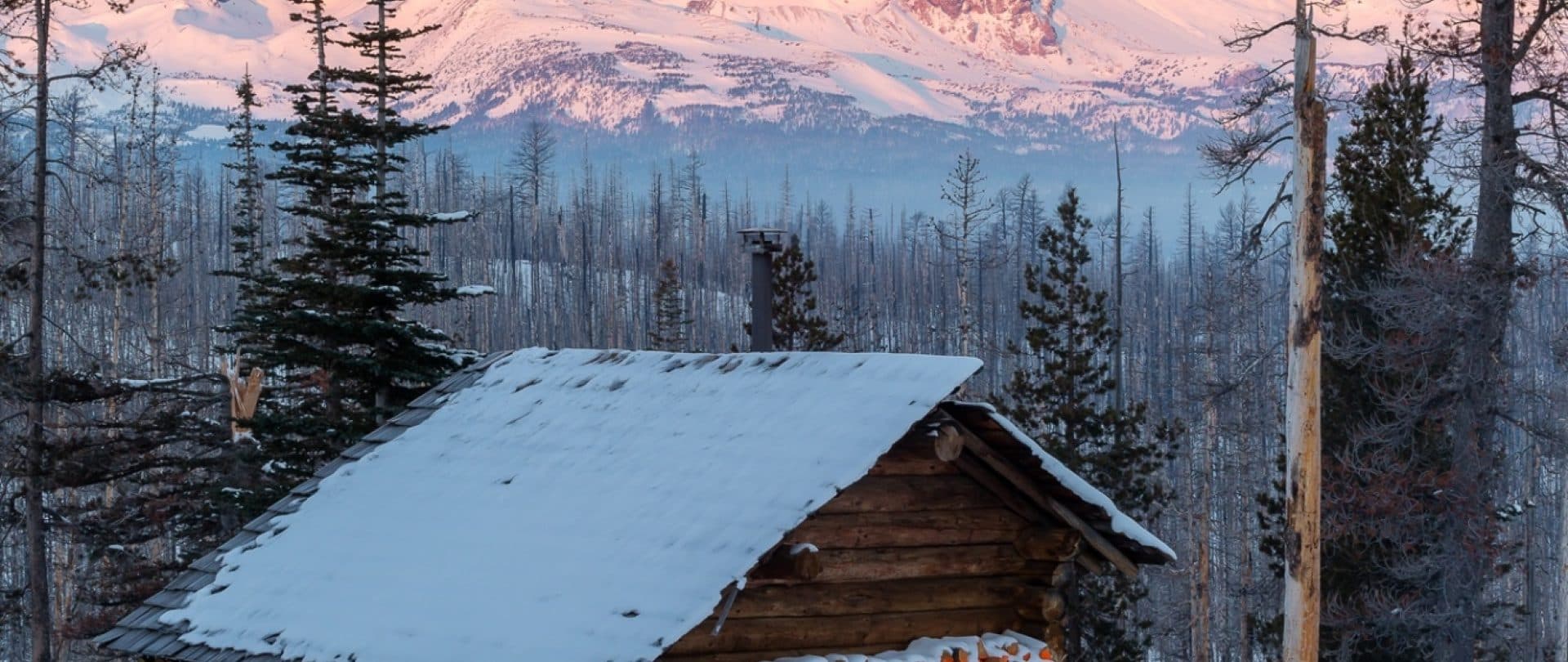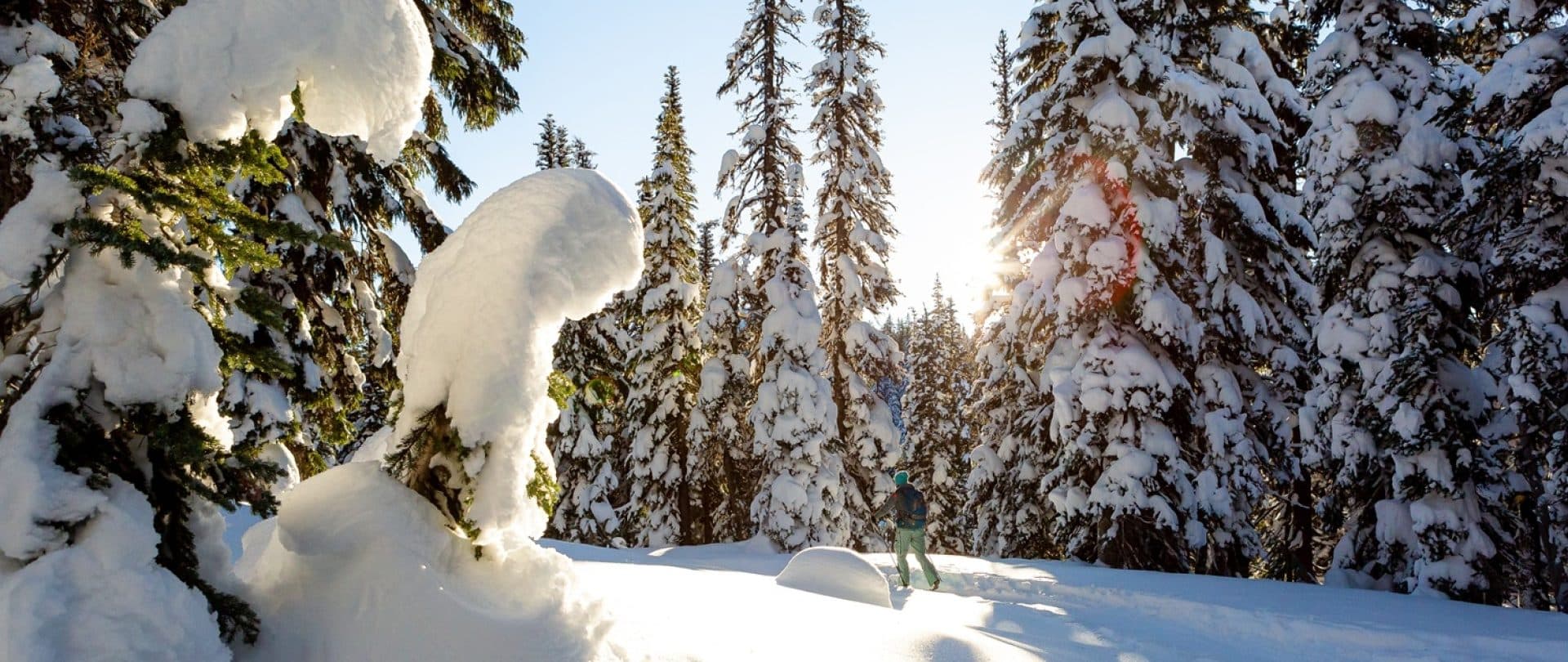Cold Play
Half a dozen nonprofits and hundreds of volunteers are responsible for maintaining activity-specific winter trails surrounding Mt. Bachelor.
BY Meghan Robins
Non-resort winter play in Bend is typically divided into two categories: activities you can do north of Cascade Lakes Highway and activities you can do south of Cascade Lakes Highway. The highway divide, where dogs are allowed, creates certain boundary lines for motorized vehicles and assists with trail etiquette that reduces conflict and increases enjoyability and safety for everyone.
However, for the average newcomer to Central Oregon, these snow-play rules may feel arbitrary or not clearly posted. For years, various nonprofits and hundreds of volunteers have been unofficially organizing the backcountry surrounding Mt. Bachelor to curate activity-specific trails that serve the variety of winter sports that make Bend so appealing. Below is a summary of what activities are best enjoyed, where and who you should thank for maintaining this abundance of trails.
North Side of Cascade Lakes Highway
North of Cascade Lakes Highway is where skiers and snowshoers enjoy motorless and dog-free winter activities. These areas include Virginia Meisner Sno-Park, Swampy Sno-Park, parts of Dutchman’s Flat and a few other lesser-named pullouts. Sno-Park permits are required (purchased at local gear shops); and based on signage, dogs and motorized vehicles are not allowed. Below are the activities you’ll enjoy on the north side of Cascade Lakes Highway.
Cross-Country Ski & Snowshoe
Fourteen miles west of Bend is Virginia Meissner Sno-Park, located on U.S. Forest Service land. The cross-country ski area is operated by Meissner Nordic, a nonprofit organization run by a board of directors and volunteers who groom 47 kilometers of skate and classic ski tracks and manage the area in partnership with the Forest Service.
Board President Steve Roti says, “We’re a low-budget, shoestring operation. We want to create opportunities for people in the community who might otherwise not be able to get out.” This includes hosting kids from across Central Oregon, community fundraising events and two high school races per year. On the busiest days, skiers find their own little pockets of solitude just half a kilometer up the trail. Day passes are free, but donations entirely fund grooming. Patrons show appreciation by dropping money into the trailhead donation box and donating online at MeissnerNordic.org.
The Central Oregon Nordic Club maintains the snowshoe network at Meissner. Single-track loops tuck between trees with steep ups and downs and offer wonderful, solitary moments. “The trails get a lot of use by snowshoers, so they are generally packed down,” says CONC Vice President Sue Sullivan. “Occasionally, people walk on the snowshoe tracks since they are pretty firm, but we don’t encourage this as walkers often posthole, which is dangerous for the walker and causes difficulties for other users.” In general, snowshoers who find themselves on wide-groomed tracks designed for skiing or snowmobiling should stay to the side and off the classic grooves.
Five miles farther up the road is Swampy Lakes Sno-Park, perfect for skiers and snowshoers looking for more off-track adventure. The wooded user-packed trails are marked by little blue triangles posted high on trees. Those who arrive first after a storm may find themselves breaking trail. Route navigation, balance, and snow safety skills are recommended, and users should always carry a map, water, and layers. It is a universal backcountry safety rule to tell someone you trust where you are going and when you expect to return.
Mt. Bachelor Nordic Center is roughly twenty miles from town and offers 56 kilometers of pristine grooming at higher elevations for often a longer ski and snowshoe season. With a lodge, locker room, café, staff, rental area, clinics and lessons, Mt. Bachelor Nordic offers an all-inclusive package for new and experienced skiers and snowshoers. Serving different user needs, Meissner and Mt. Bachelor Nordic create a complete package of trails for Nordic enthusiasts. “We don't view ourselves as competing with the Mt. Bachelor Nordic,” says Meissner Nordic’s Steve Roti. “We view the two areas as complementing each other.”
Backcountry Skiing
The parking lot at Dutchman Flat typically gets filled early and quickly with backcountry skiers and split-boarders looking for a good climb and free turns. Backcountry enthusiasts start their steady ascent up Tumalo Mountain straight from the parking lot, while snowmobilers often take the designated corridor farther into the Three Sisters Wilderness or along the upper Cascade Lakes Highway. Whatever your flavor, be sure to carry the correct safety gear, follow designated signage and educate yourself about the terrain and backcountry safety rules.
South of Cascades Lakes Highway
Across the road on the south side of Cascade Lakes Highway, fifteen miles west of Bend, is Wanoga Snow Play Area, where sleds, dogs, snowmobiles and fat bikers thrive. Once in the parking lot, turn right for motorized sports and left for non-motorized sports. Dogs are allowed on the south side of the highway, but please keep in mind the posted rules about leashing, clean up and courtesy. All trails on U.S. Forest Service land are open to non-motorized users, who always have the right of way. Motorized users are restricted to designated areas and do not have the right of way.
Fat Biking
As soon as two feet of snow hits the ground, the Central Oregon Trail Alliance (COTA) starts grooming fat-bike-specific trails at Wanoga Snow Play Area. “We use snowmobiles to groom a track 24 inches wide that replicates the feel of a summertime single track,” says Gary Meyer, COTA’s Trail Planning and Winter Trails Steward. Dragging a roller behind the snowmobile packs the trails to keep them flat and firm and helps prevent tire rutting. This is followed by a heavy-weighted plate that smooths the surface and sets the corduroy to create more freezable surface areas.
Unlike the undulating hills and harsher turn angles found on Meissner, fat bike trails at Wanoga are designed to flow between trees, avoid steep terrain and reduce pedal bashing (hitting your pedals against tall snowy sidewalls). COTA’s methodical snowpacking also reduces rutting and u-shaped divots caused by moving across snow when it is too soft.
Having the correct fat biking gear is critical, not just for enjoyment but to maintain the integrity of the trails. Fat bikers should use a minimum standard of 3.8-inch tires or wider and a maximum of four psi tire pressure. “The softer the tire, the more it squishes and makes a wider footprint, which is what you want,” says Meyer. “The maximum tire pressure is four psi; we prefer three psi or lower. Lowering the tire pressure makes for a wider footprint, which means you can float in softer snow.” If the rental shop sends you out with tires at seven psi, go ahead and lower them, suggests Meyer. You will have a more enjoyable time, ride floatier across the snow and help preserve the integrity of the trails.
Sledding
Wanoga Snow Play Area is perfect for family sledding adventures. Quick access from the parking lot to the sled hill means immediate enjoyment for children and families. Dogs are welcome, and the sun-shining parking lot is often perfect for midday snacks. There are bathrooms near the hill with vaulted pit toilets (no running water). But be aware that skiers, snowshoers and fat bikers share the parking lot, so it can get busy. To reach your sled-hill destination, you should never walk on groomed tracks, which causes season-long damage and dangerous conditions for other recreationalists.
Snowmobiling
Turn right into the Wanoga parking lot and find Central Oregon Adventures, the only full-service snowmobile rental, lessons and guide organization permitted through the Forest Service. “If you’re new to the area,” says Snowmobile Guide Adam Lochmann, “or have never snowmobiled before, it’s a good idea to have some help. We usually go down to Elk Lakes Resort, have lunch, then come back.” Snowmobilers are welcome to bring their own snowmobiles or rent one in town but having a guide to help navigate the backcountry is recommended.
Because non-motorized travelers have the right of way on all U.S. Forest Service land, snowmobilers should assume every trail is mixed-use. All backcountry users should be aware that orange diamonds indicate snowmobile trails, blue diamonds signal non-motorized trails and sometimes these cross paths. Orange rectangular signs with bold, black writing indicate snowmobile boundary lines. “Be sure to pay attention to those orange signs,” says Lochmann. “It’s a big fine and causes a lot of search and rescue missions each year.”
Approximately three hundred miles of snowmobile trails surrounding the Mt. Bachelor area are groomed by the all-volunteer nonprofit organization Moon Country Snowbusters. They typically groom seven nights weekly and provide free trail maps that every snowmobiler should always carry. Find the maps at the Wanoga trailhead, any shop in town or their website (mcsnowbusters.wixsite.com/website). They are an excellent resource for trail conditions, grooming reports and safety tips.
Safety in the Backcountry
Regardless of your winter activity of choice, self-awareness and trail use education are critical for all outdoor recreationists. 100% of these trails are made possible thanks to volunteer-based nonprofits, who use limited resources but limitless enthusiasm to create safe, fun, low-conflict experiences for all. Before you go out, ask local shops for advice when buying your Sno-Park Permit (which you’ll need), and select the appropriate trailhead based on your activities and needs.
What does every nonprofit agree on? Please don't posthole on groomed trails. This means do not walk with regular shoes that sink into set tracks. Volunteers spend countless hours maintaining the snow to create manicured, fun and universally enjoyed winter trails. Whether you are fat biking, cross-country skiing, snowshoeing, snowmobiling, or sledding, hitting a ghastly divot in an otherwise pristine trail is miserable.
If you are new to winter sports, now you know. Before you go out, pick the right place for your chosen activity and donate to the nonprofit organizations working tirelessly to keep our trail networks groomed, signage clear, and facilities clean.
Safety tips:
• Dogs are allowed on the south side of Cascade Lakes Highway (never on the north side) only.
• Sno-Park Parking permits are required from November 1st through April 30th and can be purchased at any gear shop.
• If you encounter a grooming machine, step off to the side of the trail and let them pass.
• Do not walk on groomed trails with just shoes. This can cause destructive postholes and divots on the trails, which can be dangerous for trail users.
• Orange diamonds indicate snowmobile trails. Blue diamonds indicate non-motorized trails. Orange and blue diamonds can overlap.
• Always tell someone you trust where you are going and when you intend to return.
• Bring layers, water, snacks and a map no matter how long you plan to be out.
• Enjoy Central Oregon’s primarily volunteer-maintained winter trails!
